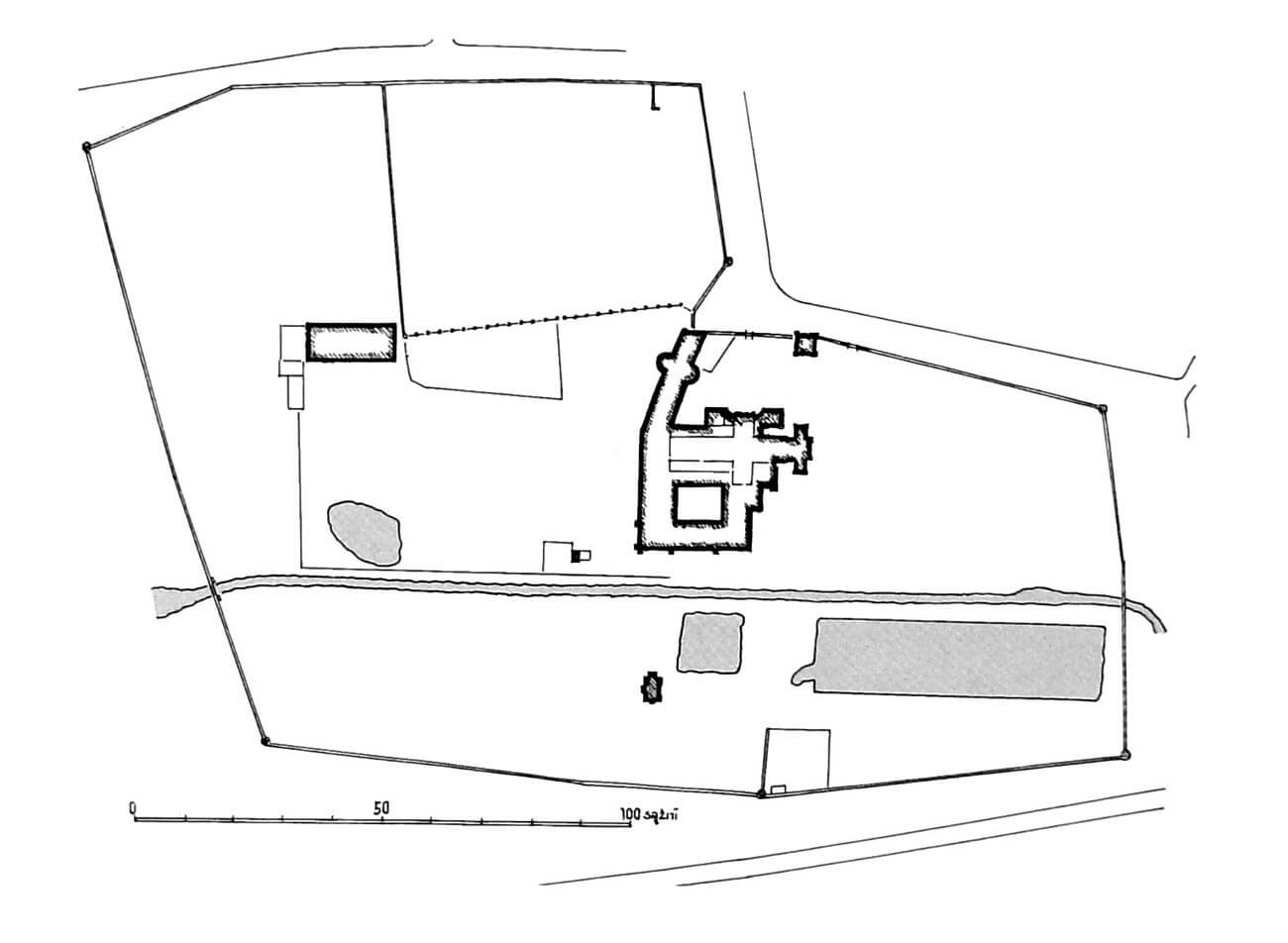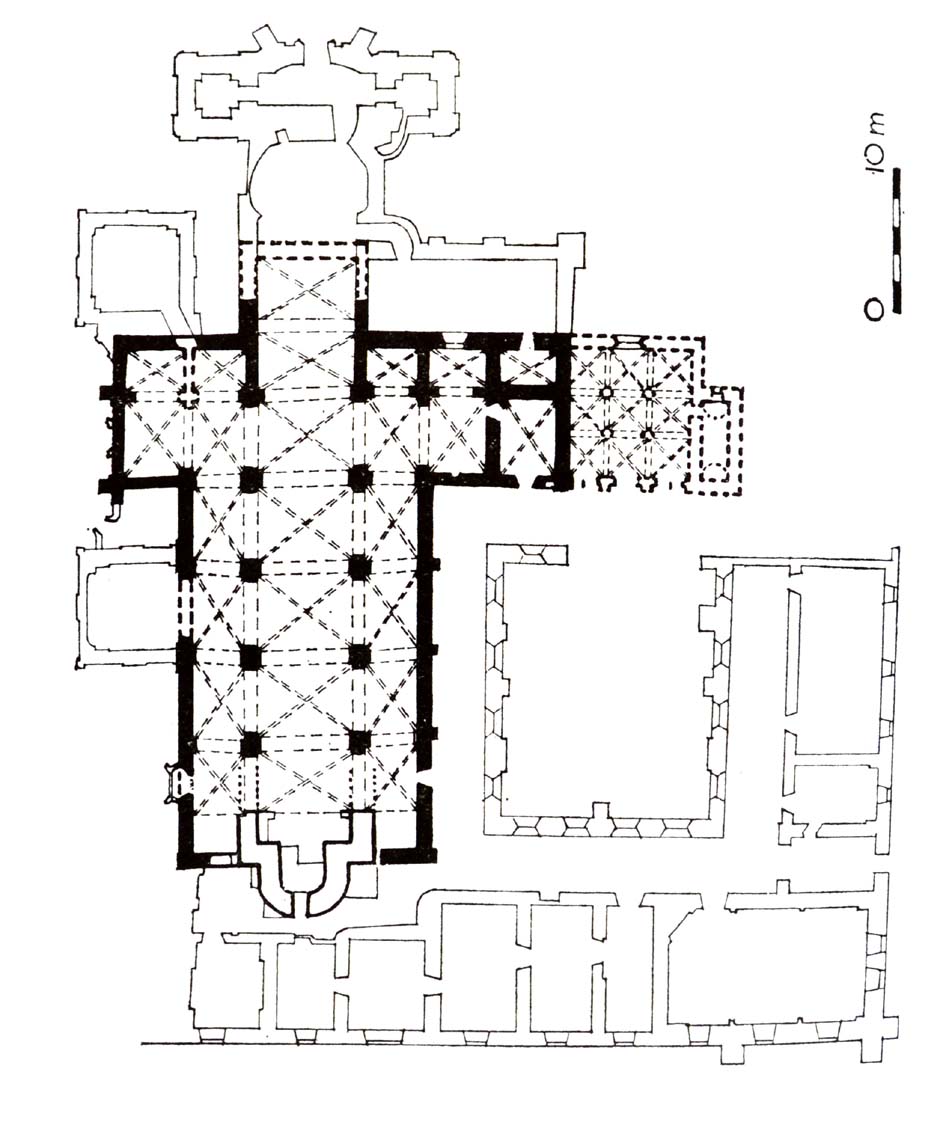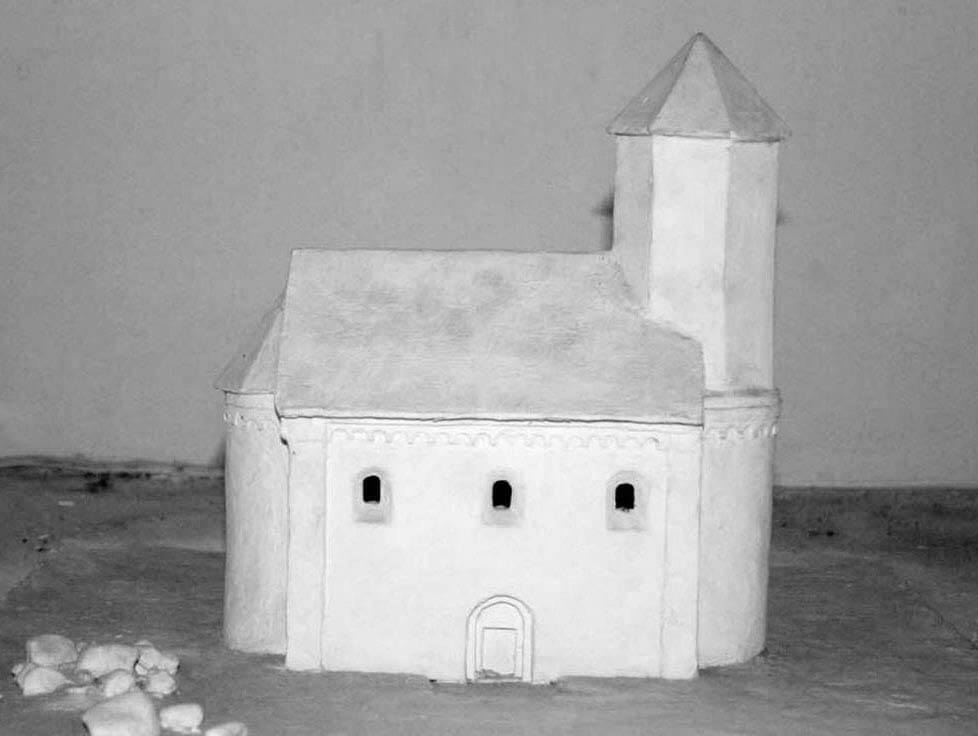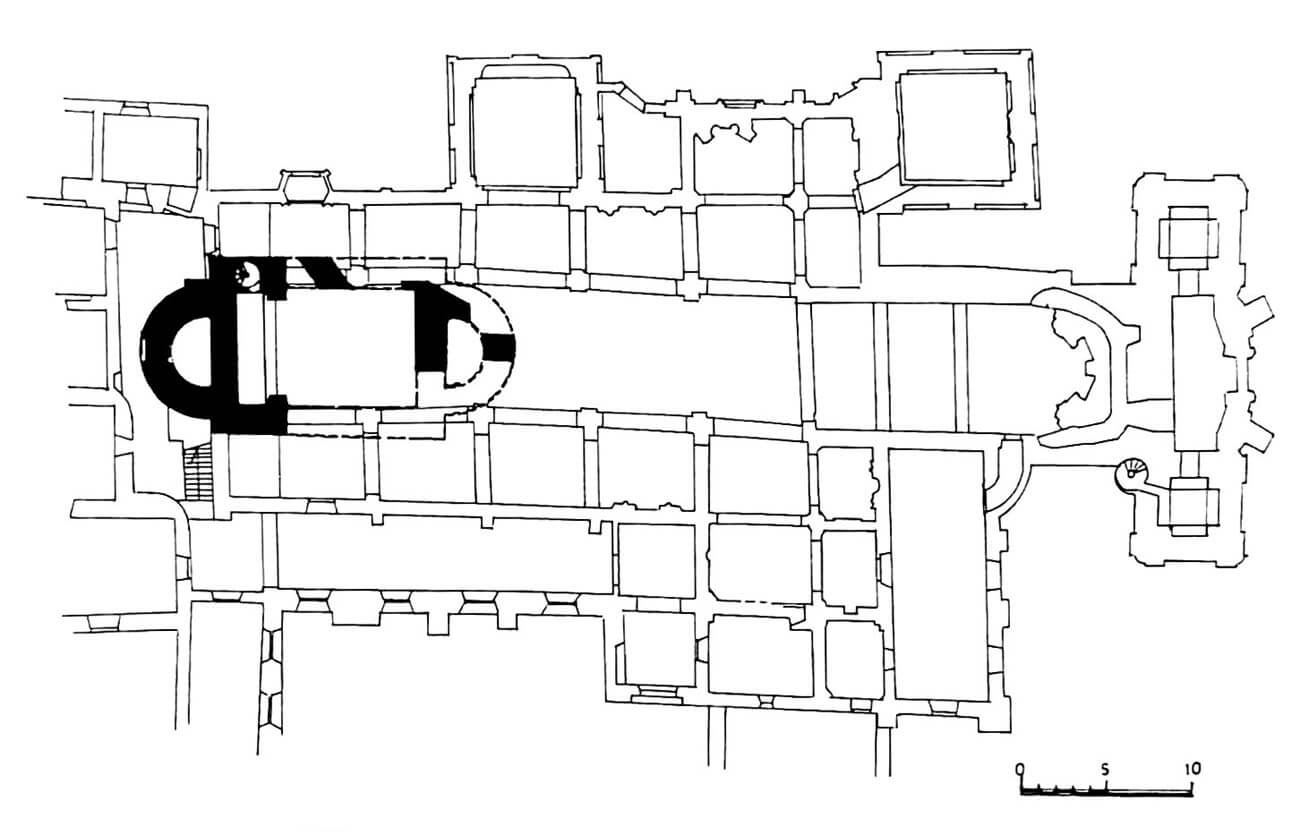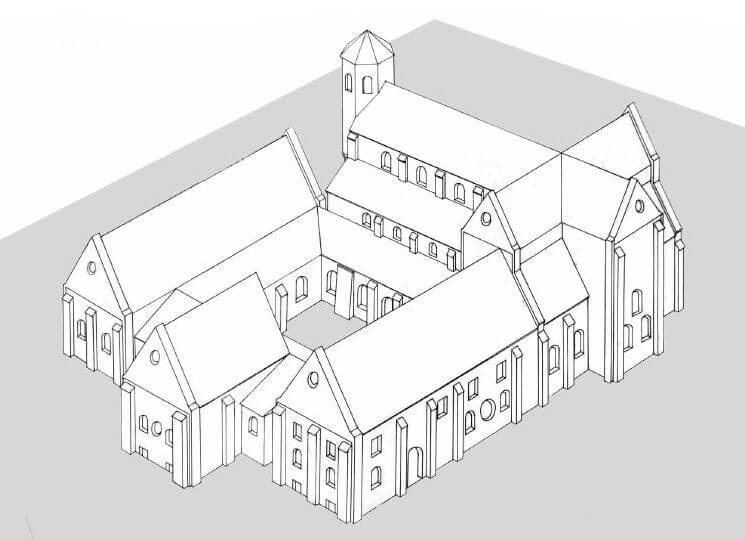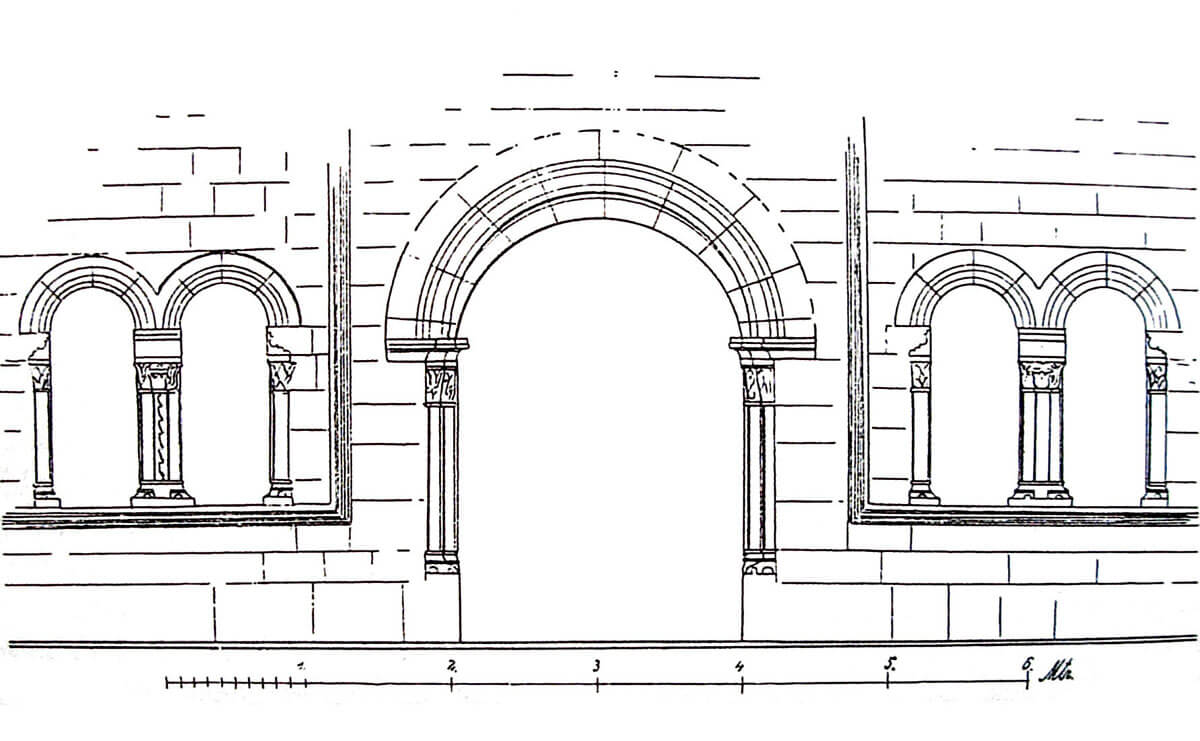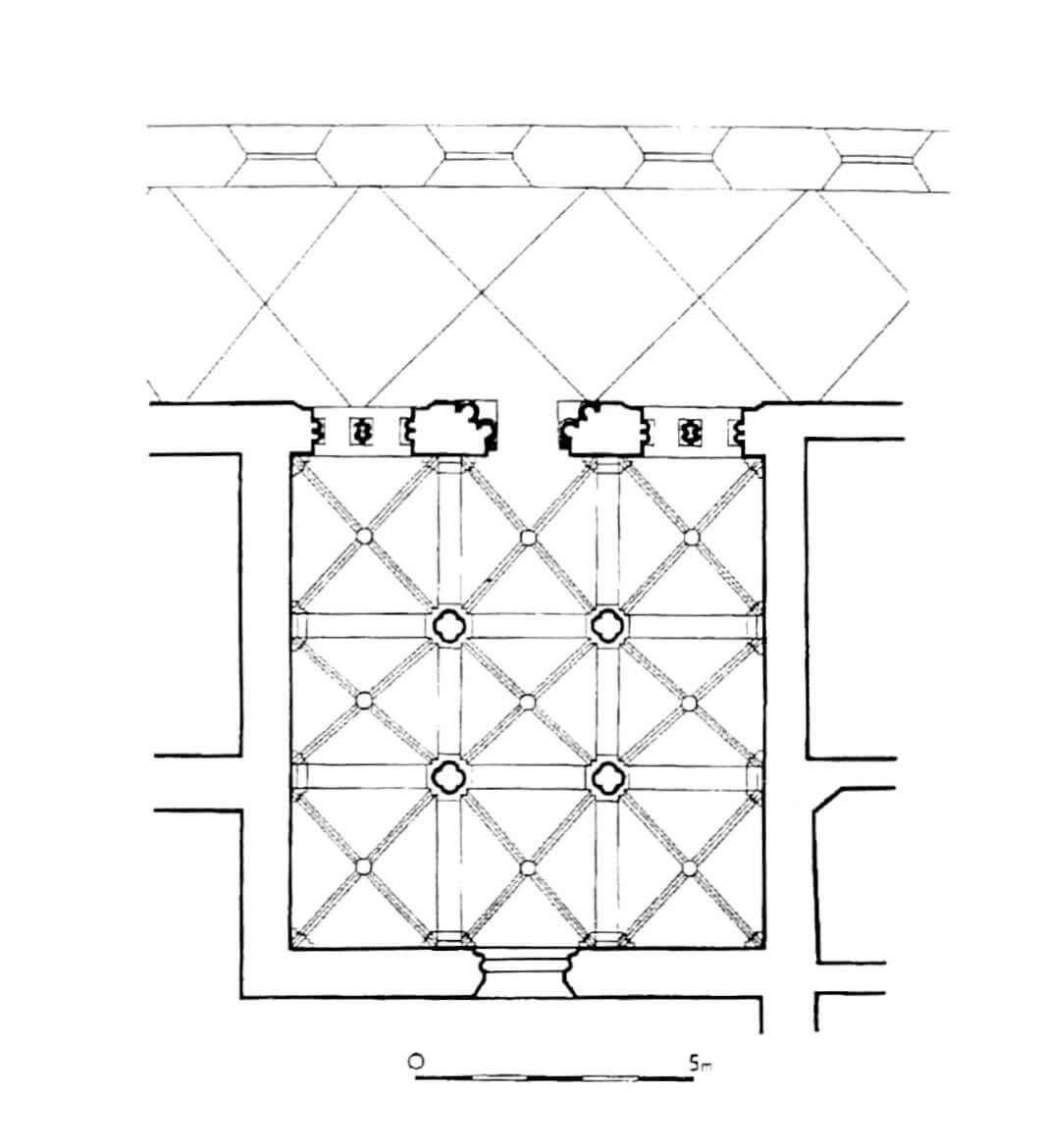History
The Cistercian monastery in Jędrzejów was founded in 1140 by the powerful family of Jaksa-Gryfit, who brought monks from Morimond in Burgundy. The new foundation was given the name Morimondus Minor, or Morimond Smaller. When the Cistercians organized a settlement for the population, it was later named Jędrzejów after the name of the patron of the east St. Andrew the Apostle. It was the first Cistercian convent in Poland.
Initially, the monks used a small church that existed in the village from around 1108. At the turn of the twelfth and thirteenth centuries, the east wing of the monastery, the church chancel with a transept and four chapels, and the outer walls of the aisles were erected, which were added to the older temple on the west side, creating a kind of inner courtyard. In more or less this form, the building lived to see the solemn consecration carried out in 1210 by the bishop of Kraków and the chronicler Wincenty Kadłubek.
The construction of the church was completed only during the Gothic period. At the turn of the 14th and 15th centuries, inter-nave pillars and the walls of the central nave were erected. In 1447, Mikołaj Odrowąż from Rembieszyce became abbot. He set out a plan for a thorough rebuilding of the monastery along with the construction of a cloister and completing work on the central nave. He also built a separate hospice building. He invited famous masters to artistic works in the abbey, including Wit Stwosz and Kraków goldsmiths: Mikołaj Kregler and Mikołaj Breimer.
In the mid-17th century, the Swedish Deluge contributed to the economic ruin of the abbey, during which it was plundered. The difficult situation was aggravated by the fire of 1726. The church burned down, its walls were weakened and the vault was destroyed. The reconstruction carried out a few years later gave it a late Baroque appearance. Another fire in 1800 turned out to be worse for the monastery buildings, as the archive and the library burned down. In 1819, the Cistercian Order was suppressed on the territory of Poland, and a few decades later, a Russian male teacher’s seminar was established in the monastery walls.
Architecture
The pre-Cistercian church from the 12th century was built of limestone in the opus emplectum technique, with the use of sandstone ashlar in structural elements (corners) and architectural details (windows, portal), as well as of unworked sandstone used in the foundations. An aisleless nave with dimensions of 6.3 x 10 meters on the west side had an apse with a diameter of 3.3 meters, divided into two floors. The upper one was a gallery extended deep into the nave with an open arcade and supported on a pillar, the lower one was connected to the nave by a narrow portal. Above the apse there was a tower with an unusual seven-sided cross-section. The facades were decorated with corner pilaster strips and an arcaded frieze under the cornice. The eastern part of the nave was also closed with an apse, 3.6 meters in diameter, thanks to which the church was very similar to the Romanesque church in Prandocin.
According to the Cistercian scheme, the medieval monastery church was a three-aisle basilica with a transept and a straight ended, two-bay chancel flanked from the north and south by double chapels. Its length was 38.5 meters, the width of the nave was 16.8 meters, (including the central nave 5.9 meters), and the chancel 7.3 meters. The dimensions of the transept were 5.6×27 meters. The church was built of large, finely worked blocks of sandstone with faces decorated with delicate cuts. Few of the blocks were marked with stonemason’s marks. It is not known what the outer façades of the church originally looked like, only in the southern aisle a row of semi-circular windows have survived. Similar were used in the western walls of the aisles and in the southern wall of the chancel. In the west facade of the nave (in the base of the tower of the former pre-monastery church) a rosette window with richly moulded jambs was pierced. Inside, the nave consisted of four rectangular bays, with the western bays of the central nave covering the relics of an older church, from which the western part was left with a seven-sided tower on a semicircular base. The vaults of the nave, chancel and transept were probably cross-ribbed supported on wall-corbels (one of the earliest of this type in Poland), whereas in the case of transept chapels the cross vaults without ribs were used.
On the south and west sides of the church there were monastery buildings surrounding the cloister. The eastern wing with an internal width of 8.7 meters (external 11 meters) housed the sacristy from the north, then the chapter house, stairs to the first floor under which the barrel vaulted prison was located, then the lobby and day room. The sacristy was topped with three rectangular bays of the rib vault without bosses. The entrance to it from the cloister was covered with a monolithic lintel in the form of a pentagonal tympanum. The chapter house with an interior on a square plan measuring 8.8 x 8.8 meters consisted of nine square vaults based on four pillars and wall corbels, supporting the rib vaults separated by buttresses. It was particularly richly decorated, because it was here that the main matters of the convent were held every day. The monks sat on benches against the walls, and in the middle there was probably a lector’s desk. In the western wall there was a semicircular portal without a tympanum, flanked with open-works with semicircular arches, supported in the middle on beam pillars composed of four columns and on two side on semi-columns. Column heads, corbels and bosses of the chapter house were covered with floral decoration enriched with a string motif. These details were originally covered with red, green, yellow and maybe blue polychromes. From the east, the chapter house was probably illuminated by three windows, of which the middle one could be a moulded oculus. Only from chapter house it was possible to get to the neighboring prison, illuminated by a single, small window. Day room, that is a room for manual work, used especially in winter, received dimensions of 9 x 7 meters. It ended the east wing from the south. Using the slope of the area towards the Brzeźnica River, two cellars 6.3 x 3.9 meters each were placed under the day room, covered with barrel vaults.
The east wing upper floor was occupied by the brothers’ bedroom, a dormitory, erected in contrast to the lower part using bricks. It probably occupied most of the space of the east wing and was connected directly to the southern transept, where by means of night stairs the brothers went to evening prayers. Mostly the dormitories on both sides were illuminated by small windows that corresponded to individual sleeping places. In the west, windows overlooked over the mono-pitched roof of the cloister to the garden, while in the east, the monastery grounds. The beds since the 12th / 13th century were separated by wooden or half-timbered partitions, creating separate cabins, sometimes obscured by curtains, but always leaving the passage through the center of the dormitory. In addition, on the upper floor of the east wing there was a cross-ribbed two-bay room, occupying the space between the two chapels at the transept. Initially, it probably served as the abbot’s chamber, and later as a library. On the opposite side of the wing, at the end of the room, there were usually passages to the latrines, located on the first floor, above the sewer. Often, for hygienic reasons, latrines were built at a distance from the monastery wing and connected to it by means of a porch hung on arcades.
The southern wing housed a large, three-bay refectory measuring approximately 9.5 x 19 meters, positioned as in most Cistercian monasteries perpendicular to the axis of the wing. It had a lower storey covered with six bays of rib vaults, where a partially vaulted channel was placed supplying water to the kitchen and lavabo, and then draining sewage. The refectory was built of bricks, probably already around the mid-thirteenth century, as evidenced by the archaic structure of the vaults with arch bands between the bays and ribs with a rectangular cross-section. The refectory was initially a free-standing building, strengthened from the outside by diagonal buttresses in the corners and straight buttresses in the places of the vaulted bays. During the late Gothic period, it was connected to other rooms of the southern wing, among others, a kitchen and perhaps a calefactory, i.e. a room heated throughout the winter, in which the brothers could warm up as the only hot one place in the monastery. Inside the refectory there should be a opening for serving dishes from the kitchen and a lector’s desk from which it was read during meals.
The west wing was built of unworked stone, but nothing more is known about its arrangement or purpose (in Cistercian monasteries these wings were most often intended for lay brothers and for the pantry and cellars – cellarium). All wings were connected by a late Gothic cloister with high ogival arcades, which provided connection to most of the monastery’s chambers without leaving the weather. In the center there was a patio, a monastery garden, a place for growing herbs and vegetables, as well as rest. In the middle of it was a well, carefully walled with stone blocks.
Current state
The entire monastery was heavily rebuilt in the 18th century by adding a two-tower, Baroque façade to the chancel, the addition of chapels from the north, and a complete change of the church’s interior and furnishing. From the Middle Ages a semi-circular stone tower in the central part of the monastery and a fragment of the old façade, still from the pre-cistercian church from before 1118, are preserved. Next to it is a Romanesque portal and a small window from the early 13th century and in the eastern bay of the nave from the cloister side ogival portal and window with a well-preserved tracery. Also, most of the perimeter walls of the medieval basilica have survived, partially transformed chapels at the transept along with relics of old internal articulation. On the ashlar of the church walls, within the cloister, several dozen inscriptions and drawings engraved or drawn with coal are visible. Some of them, presenting ornamental, geometric and floral motifs are probably patterns for stonemasons who make bosses and capitals. Of the monastery buildings, the sacristy and three wings of the cloister have survived only.
bibliography:
Jarzewicz J., Kościoły romańskie w Polsce, Kraków 2014.
Łużyniecka E., Kunkel R., Świechowski Z., Architektura opactw cysterskich. Małopolskie filie Morimond, Wrocław 2008.
Świechowski Z., Architektura romańska w Polsce, Warszawa 2000.
Sztuka polska przedromańska i romańska do schyłku XIII wieku, red. M. Walicki, Warszawa 1971.

